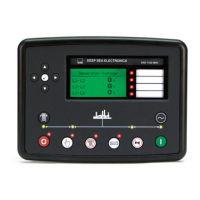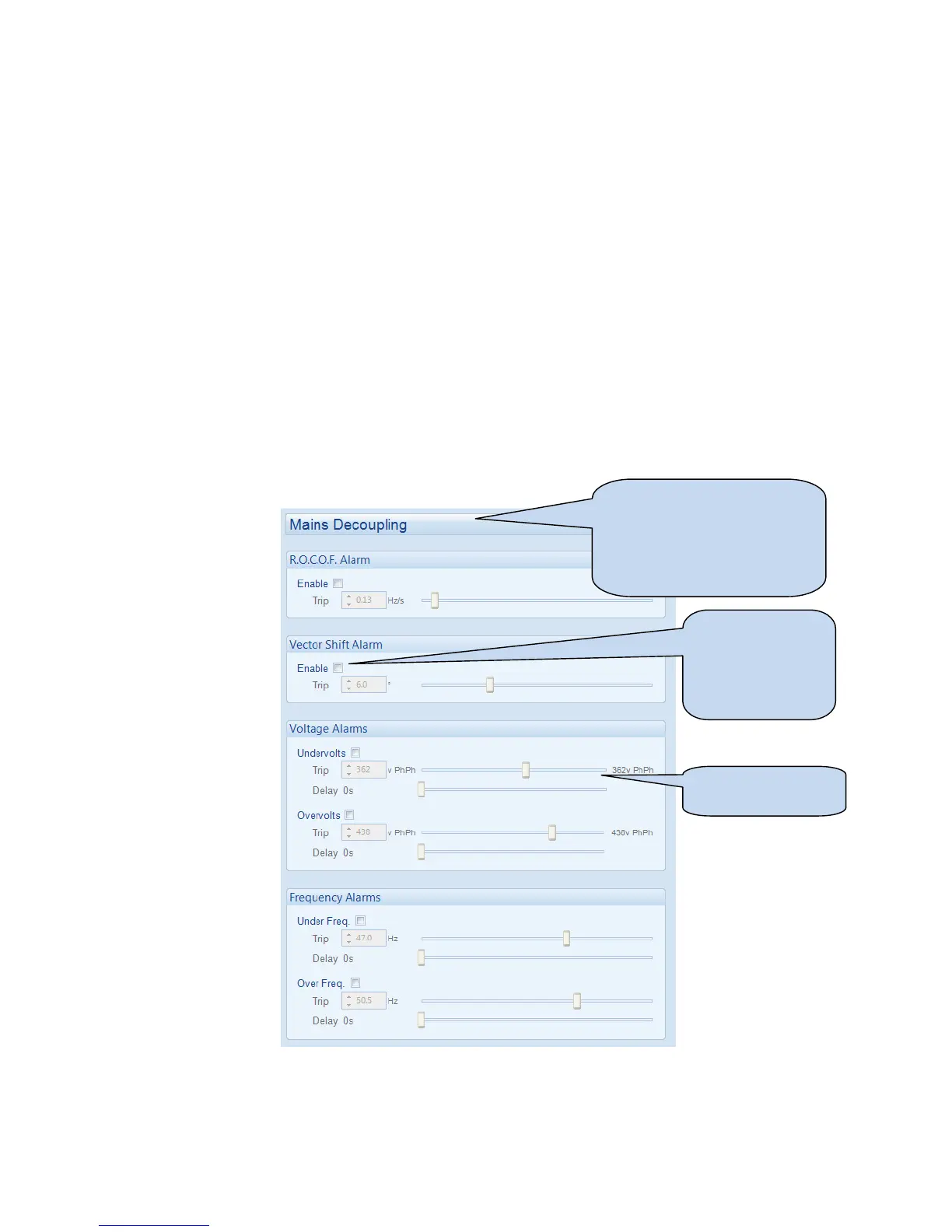Edit Configuration
56
4.7.6 MAINS DECOUPLING
The controller includes “Mains decoupling” detection to be used with generating sets paralleling with the
mains (utility) supply.
When the generator set is in parallel with the mains supply it is important that failure of the mains is detected
as soon as possible otherwise problems will arise. It is not possible to simply monitor the mains voltage and
frequency as the sensing of this is now being fed by the generator itself!
Because of this and other possible dangerous situations, the power supply companies impose regulations
when generators are in parallel. This is to detect mains failure during parallel operation and to remove the
generator from the grid in this situation. In the UK a common regulation requirement is G59. Other countries
have different names for these regulations.
Failure to detect and act upon loss of mains supply when in parallel leads to the following effects:
• The generator feeds the site load and attempts to feed the load of the grid. Depending upon the
generator size and the location of the network fault, this will cause problems to the generator in terms
of capacity and stability.
• If the generator is able to supply the load, Engineers working on the supposedly dead network would
be in fact working on live cables, supplied by the generator set. This is potentially fatal.
• Should the mains supply be reconnected when the generator is still connected to the grid, the
network would be connected to a generator not synchronised with it, with damaging results
(mechanical failure, rotating diode failure, overloaded cables, pole slip etc)
Parameters detailed overleaf...
Mains decoupling is not available
on DSE8810 unless a digital
input is configured to Mains
Parallel Mode. When not
configured for this option, the
parameters appear greyed out.
Click to enable or
disable the option.
The relevant values
below will appear
greyed out if the
alarm is disabled.
Click and drag to
change the setting.

